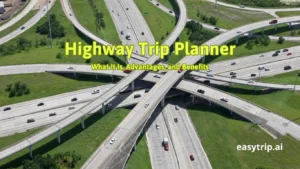Introduction: Plan My Trip Metro, navigating the Urban Jungle
Traveling through major cities often feels like navigating a complex maze. Streets teeming with cars, buses stopping at seemingly random intervals, and the constant hustle of pedestrians can make getting from point A to point B a daunting task. However, there’s a secret weapon that savvy travelers and locals alike swear by: the metro system. Whether you’re a tourist aiming to plan their trip with Metro, uncover every nook and cranny of a bustling metropolis or a daily commuter looking to streamline your route, mastering the metro is your key to efficient, stress-free travel.Understanding Metro Systems: The Backbone of Urban Transport
Metro systems, often referred to as subways, undergrounds, or tubes, are the lifeblood of urban transportation. These intricate networks of underground trains allow you to glide beneath the city’s surface, bypassing the chaos above. Designed for speed and efficiency, metros are indispensable for anyone needing to move quickly across a city, whether you’re hopping between tourist hotspots or making your way to the office. But what exactly makes metro systems so vital? It’s their ability to provide fast, frequent, and reliable transit across sprawling urban areas. Unlike buses, metros aren’t subject to traffic jams. This predictability makes them the preferred mode of transport for millions of people every day.Choosing the Right Metro App: Guide
In today’s tech-savvy world, your smartphone is your best travel companion. When it comes to navigating a metro system, having the right app can make all the difference. Apps like Citymapper, Google Maps, and Transit are at the top of the game, offering comprehensive transit information that’s always at your fingertips. These apps do more than just tell you when the next train is arriving. They provide real-time updates on delays, suggest alternative routes, and even alert you to service changes that might impact your journey. With features like route planning, fare information, and offline maps, these apps ensure that you’re never left stranded in a confusing metro station.Planning Your Route: The Art of Efficient Travel
Planning your route on the metro isn’t just about knowing which train to catch. It’s about understanding the nuances that can make your journey smoother and more enjoyable. Start by identifying the nearest metro station to your starting point. From there, map out the route to your destination, paying close attention to the number of transfers required and the total travel time. Consider the time of day as well. Rush hour can turn even the most straightforward journey into a crowded, sweaty ordeal. If you can, plan to travel during off-peak hours to avoid the crush. And if you’re out late at night, be sure to check the last train times—there’s nothing worse than getting stranded in an unfamiliar part of the city after the metro shuts down.Purchasing Tickets and Passes: Navigating the Fare Maze
Understanding the fare system of a city’s metro can save you both time and money. Many metros offer a variety of ticketing options, from single-journey tickets to day passes and reloadable fare cards. The best choice depends on how long you’ll be in the city and how often you plan to use the metro. In some cities, you can purchase tickets directly through an app, allowing you to skip the lines at ticket machines. Mobile ticketing is not only convenient but also reduces the hassle of keeping track of paper tickets. And don’t forget to check for any discounts or special passes for tourists, which can offer significant savings.Navigating Metro Stations: Decoding the Underground Labyrinth
Metro stations can be overwhelming, especially in large cities where they resemble subterranean cities in their own right. The key to navigating these spaces is preparation. Familiarize yourself with the layout of key stations, especially those where you’ll need to transfer between lines. Look for station maps and clear signage that directs you to the correct platform. In some stations, you’ll find interactive kiosks that can help you plot your course. And if you’re ever unsure, don’t hesitate to ask for help—station staff are usually more than willing to assist.Staying Safe: Security on the Underground
While metro systems are generally safe, it’s important to stay vigilant, especially during off-peak hours or when traveling alone. Keep your belongings close, be aware of your surroundings, and follow any safety guidelines provided by the metro authorities. Be cautious in crowded spaces where pickpockets might operate. Use the strap of your bag to keep it secure, and avoid flashing valuables. If something feels off, trust your instincts and move to a safer, more populated area of the station.Incorporating Metro into Broader Travel Plans: Connecting the Dots
The metro isn’t just a way to get from one place to another—it’s a crucial part of a broader transportation network. When planning your trip, think about how you can integrate the metro with other forms of transport, like buses, bike shares, or walking paths. This approach allows you to reach destinations that aren’t directly accessible by metro, giving you greater flexibility in your travel plans. For example, you might take the metro to a certain stop, then hop on a bus to reach a remote neighborhood, or rent a bike for the final leg of your journey. This layered approach not only makes your travel more efficient but also opens up opportunities to explore areas that might otherwise be overlooked.Advantages of Metro Travel: The Smart Choice for Urban Exploration
Why choose the metro over other forms of transport? For starters, it’s cost-effective. Metro fares are usually cheaper than taxis or ride-sharing services, especially for long distances. It’s also an environmentally friendly option, reducing your carbon footprint while allowing you to experience the city like a local. Moreover, using the metro can lead to serendipitous discoveries. You might stumble upon a charming neighborhood or a hidden gem of a café just by choosing to get off at a random stop. Unlike the isolation of a taxi or bus, the metro places you in the heart of the city’s pulse, offering a more immersive travel experience.Conclusion: Mastering the Metro—Your Ticket to Urban Mastery
Metro systems are more than just a way to get around—they’re the veins that carry the lifeblood of a city. By learning to navigate these systems efficiently, you unlock a deeper, more connected experience of the places you visit. Whether you’re a seasoned commuter or a first-time tourist, understanding how to use the metro can elevate your urban adventures, making your journeys not just about the destination, but about the exploration along the way.TL;DR: Effective Metro Travel Planning
Plan your metro trips with apps like Citymapper or Google Maps to find the best routes, purchase tickets easily, and navigate stations without hassle. Integrating metro travel into your city visits can make your journeys quicker, cheaper, and more enjoyable.FAQ Section
What should I do if I get lost in a metro station? If you get lost, don’t panic. Most metro stations have information booths or help points where you can get assistance. Can I use the same ticket for different metro lines? In most cities, one ticket allows you to travel on any metro line within the system, as long as you do not exit the station. However, check local fare rules as systems vary. How can I find out about planned metro closures or service interruptions? Most metro systems have apps or websites where they post real-time service updates, or you can use city-wide travel apps that include service alerts.What to Avoid?
Ignoring local transit rules: Each city has its own set of guidelines and regulations for public transportation. Ensure you understand and adhere to these rules to avoid fines or other inconveniences.








